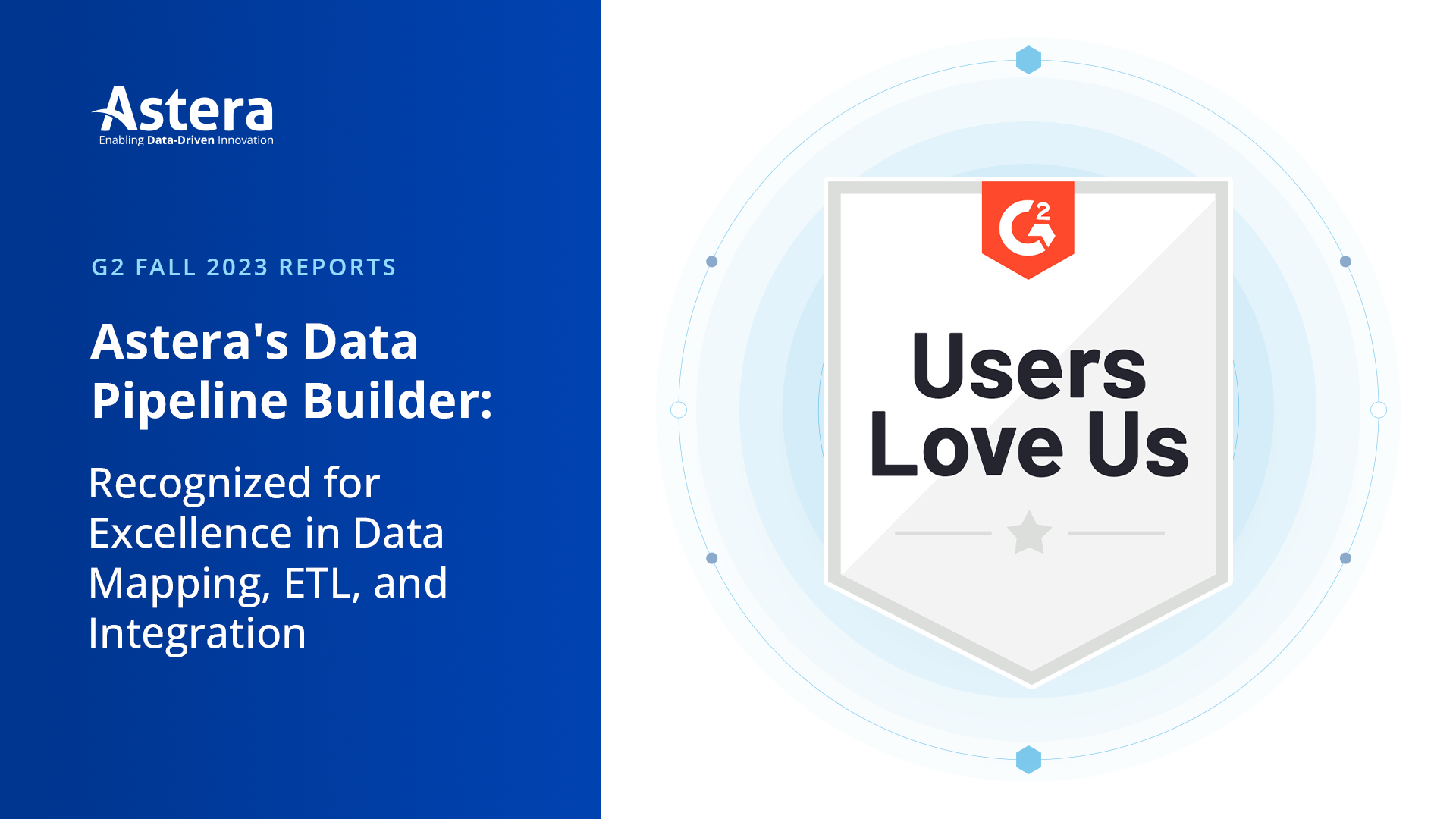
In the evolving technology age of today, the utilization of the best data pipeline tools is paramount. These tools play a crucial role in efficiently extracting, transforming, and loading data from various sources into a centralized repository.
By doing so, they facilitate easy access to analysis and informed decision-making. As the volume and complexity of data continue to rise, effective management and processing become essential. The best data pipeline tools offer the necessary infrastructure to automate data workflows, ensuring impeccable data quality, reliability, and timely availability.
Empowering data engineers and analysts, these tools streamline data processing, integrate diverse sources, and establish robust data governance practices. Ultimately, they enable organizations to unlock valuable insights and gain a competitive edge.
What Is a Data Pipeline?
A data pipeline is a series of steps and processes for moving, transforming, and processing data from one system to another. It ensures data availability, accuracy, and accessibility for analytics and decision-making. The pipeline includes stages such as data ingestion, extraction, transformation, validation, storage, analysis, and delivery, as well as technologies like ETL (extract, transform, load), batch processing, real-time streaming, and data warehouses.
Data pipelines are essential for managing data lifecycle, enabling data-driven decision-making, and maximizing the value of data assets. Depending on their requirements, organizations use different types of data pipelines, these include:
Batch Pipelines: To process data in large chunks at scheduled intervals.
Real-time Pipelines: To process data in near real-time or when low latency is a critical requirement.
ETL Pipelines: ETL pipelines are most commonly used for data integration and data warehousing purposes.
ELT Pipelines: ELT (extract, load, transform) pipelines are used when loading data into a centralized repository is of prime importance.
Event-driven Pipelines: These pipelines are triggered by specific events or triggers, such as new data arrival or system events. They enable real-time or near real-time data processing and are often used in complex event processing, IoT applications, and event-based architectures.
What are Data Pipeline Tools?
Data pipeline tools are software solutions designed to streamline the movement of data within an organization. They automate the process of extracting, transforming, and loading data, facilitating the efficient flow of information from source systems to destination points, such as databases or data warehouses. These tools play a vital role in optimizing data management and processing workflows. As a result, organizations can effectively leverage their data for analysis and decision-making.
At their core, data pipeline tools eliminate the need for manual intervention in data processes. By providing a systematic and automated approach to data integration and management, these tools contribute to a more reliable and responsive data infrastructure.
Types of Data Pipeline Tools
Data pipeline tools can be categorized into various types based on their functionality and use cases. Here are some common types:
Real-Time vs Batch Data Pipeline Tools
Real-time data pipeline tools are designed to process and analyze data as it is generated, providing immediate insights and responses. These tools are crucial for applications that require up-to-the-minute information. Batch data pipeline tools, on the other hand, process data in fixed-size chunks or batches. These tools are suitable for scenarios where immediate analysis is not critical.
|
Real-Time Data Pipeline Tools |
Batch Data Pipeline Tools |
| Processing |
Delivers low latency for quick analysis |
Processes data in fixed-size batches |
| Use Cases |
Immediate insights and responses |
Non-critical analysis scenarios |
| Implementation |
Often requires more resources |
Simpler to implement and maintain |
Open-Source vs Proprietary Data Pipeline Tools
Popular open-source data pipeline tools, such as Apache NiFi or Apache Airflow, have gained widespread adoption due to their flexibility, community support, and the ability for users to tailor them to fit diverse data processing requirements.
|
Open-Source Data Pipeline Tools |
Proprietary Data Pipeline Tools |
| Development |
Developed collaboratively by a community |
Developed and owned by for-profit companies |
| Accessibility |
Freely accessible source code |
Generally not free for commercial use. May have freemium versions |
| Support |
Lacks official support but are backed by community |
Usually offer dedicated support; varies by company |
| Open-source data pipeline tools have a steep learning curve, making it challenging for non-technical or business users. On the other hand, proprietary data pipeline tools are easy to use and simplify data pipeline building and maintenance, even for business users. |
On-Premises vs Cloud Data Pipeline Tools
On-premises tools operate within the organization’s infrastructure, providing a heightened level of control and security over data processing. On the other hand, cloud data pipeline tools operate on infrastructure provided by third-party cloud service providers, offering organizations a flexible and scalable solution for managing their data workflows.
|
On-Premises Data Pipeline Tools |
Cloud Data Pipeline Tools |
| Infrastructure |
Operate within the organization’s infrastructure |
Operate on third-party cloud infrastructure |
| Control and Security |
Provide a high level of control and security |
The focus is more on flexibility and scalability |
| Operational Responsibilities |
Require managing and maintaining the entire infrastructure |
Managed services for tasks like data storage, compute resources, and security |
| On-premises data pipeline tools are favored in industries like finance and healthcare for data privacy and security. They provide autonomy but require managing infrastructure. Cloud data pipeline tools operate on third-party infrastructure, offering flexibility and managed services, reducing operational burdens. |
What Business Challenges do Data Pipeline Tools Overcome?
Data pipeline tools are the backbone of modern data management strategies, addressing a spectrum of challenges that organizations face in navigating the complexities of data processing. These tools guide data from diverse sources to its destination, all the while mitigating several critical business challenges.
Data Integration and Consolidation
- Challenge: Businesses often have data scattered across various systems and sources, making it challenging to integrate and consolidate for a unified view.
- Solution: Data pipeline tools facilitate the extraction, transformation, and loading processes, enabling seamless integration and consolidation of data from diverse sources into a central repository.
Real-Time Decision-Making
- Challenge: Traditional batch processing methods result in delayed insights, hindering real-time decision-making.
- Solution: Real-time data processing within data pipelines enables businesses to analyze and act on data as it is generated, supporting timely decision-making.
Data Quality and Consistency
- Challenge: Inaccuracies, inconsistencies, and poor data quality can lead to unreliable insights and decision-making.
- Solution: Data pipeline tools offer data quality features, allowing businesses to clean, validate, and enhance data, ensuring accuracy and consistency.
Scalability and Performance
- Challenge: Handling growing volumes of data can strain traditional systems, leading to performance issues and scalability challenges.
- Solution: Cloud-based data pipeline tools provide scalable infrastructure, allowing businesses to dynamically adjust resources based on workload demands, ensuring optimal performance.
Operational Efficiency
- Challenge: Manually managing and orchestrating complex data workflows can be time-consuming and prone to error.
- Solution: Workflow orchestration tools automate and streamline data processing tasks, improving operational efficiency, and reducing the risk of human errors.
Factors to Account for When Buying a Data Pipeline Tool
When it comes to buying a data pipeline tool, there are several factors that weigh in,
- Scalability: Assess whether the tool can handle your current and future data volume and velocity requirements. Look for horizontal and vertical scalability to accommodate expanding data needs.
- Data Sources and Targets: Ensure the data pipeline tool supports the data sources and destinations relevant to your organization, including databases, file formats, cloud services, and APIs.
- Data Transformation and Integration: Evaluate the tool’s capabilities for data transformation, cleansing, and integration. Look for features that simplify complex data mapping, merging, and handling different data types.
- Real-Time vs. Batch Processing: Determine if the data pipeline tool supports your preferred data processing mode. Assess whether real-time streaming or batch processing is suitable for your pipeline needs.
- Ease of Use and Learning Curve: Consider the tool’s user interface, configuration simplicity, and usability. Look for intuitive interfaces, visual workflows, and drag-and-drop functionalities to streamline pipeline development and management.
- Monitoring and Alerting: Check if the data pipeline tool provides comprehensive monitoring and alerting features. It should offer visibility into pipeline health, performance, and status, including logs, metrics, error handling, and notifications for efficient troubleshooting.
- Security and Compliance: Ensure the tool provides robust security measures such as encryption, access controls, and compliance with relevant regulations (e.g., GDPR, HIPAA) when handling sensitive or regulated data.
- Integration with Existing Infrastructure: Evaluate how well the data pipeline tool integrates with your current infrastructure, including data storage systems and analytics platforms. Seamless integration can save time and effort in pipeline setup and maintenance.
- Support and Documentation: Assess the level of support and availability of documentation from the tool’s vendor. Look for comprehensive documentation, user forums, and responsive support channels to assist with troubleshooting.
- Total Cost of Ownership: Consider the overall cost of the data pipeline tool, including licensing, maintenance, and additional resources required for implementation and support. Evaluate if the tool provides good value based on its features and capabilities.
10 Best Data Pipeline Tools in 2024
Let us look at some of the best data pipeline tools of 2024.
- Astera Data Stack: Astera Data Stack is a comprehensive, 100% no-code data management platform with powerful pipeline capabilities, including visual design, workflow automation, process orchestration, and monitoring. It’s a unified solution that simplifies unstructured data extraction, end-to-end data integration, EDI management, data warehousing, and API management.
- Apache Airflow: An open-source platform for creating, scheduling, and monitoring workflows, offering flexibility and extensive integrations.
- Apache Kafka: A distributed streaming platform known for high-throughput, fault-tolerant, and scalable real-time data ingestion and processing.
- AWS Glue: A fully managed ETL service on Amazon Web Services, seamlessly integrating with various AWS services and supporting batch and streaming processing.
- Google Cloud Dataflow: A serverless data processing service by Google Cloud, enabling scalable and efficient batch and streaming data pipelines.
- Microsoft Azure Data Factory: A cloud based ETL and data integration service on Microsoft Azure, facilitating orchestration of pipelines across diverse sources.
- Informatica PowerCenter: An enterprise-grade data integration and ETL tool, offering extensive features for building complex pipelines and transformations.
- Talend Data Integration: A comprehensive platform for designing, deploying, and managing data pipelines with extensive connectivity options.
- Matillion: A cloud native ETL platform designed for modern data architectures, supporting popular cloud data warehouses, and providing intuitive interfaces.
- StreamSets Data Collector: A data integration platform focused on real-time data pipelines with monitoring and troubleshooting capabilities.
What Makes Astera Data Stack the Best?

Integration and Monitoring
Astera Data Stack stands out in the market for several reasons. It offers a comprehensive and powerful data integration tool, which, with its wide range of features, enables users to design, deploy, and monitor data pipelines efficiently. The visual design interface simplifies the pipeline creation process, making it accessible to both technical and non-technical users.
Astera Data Stack excels in providing end-to-end visibility and control over data workflows. Its monitoring capabilities allow users to track pipeline performance, identify bottlenecks, and troubleshoot issues promptly.
Additionally, the platform offers advanced scheduling and dependency management features, ensuring seamless execution of complex data pipelines. Since Astera Data Stack is a no-code solution, it’s easy to navigate and does hours of work in mere seconds.
Flexibility And Collaboration
One of the key strengths of Astera Data Stack is its flexibility. It supports a variety of data sources and targets, allowing users to integrate diverse systems and formats. The platform also offers comprehensive data transformation capabilities, empowering users to cleanse, enrich, and manipulate data within the pipeline itself.
Furthermore, Astera Data Stack emphasizes collaboration and teamwork. The platform supports role-based access control, allowing multiple users to work simultaneously on pipeline development and management. It fosters collaboration across teams, enhancing productivity and efficiency.
Streamline Data Pipeline Automation with Astera

Selecting the right data pipeline tool is essential for organizations to effectively manage and process their data. Astera Data Stack’s comprehensive features, visual design interface, focus, and collaborative capabilities make it a standout choice in the market.
With Astera Data Stack, users can design, deploy, and monitor data pipelines efficiently, ensuring end-to-end visibility and control. The platform’s flexibility, support for various data sources, and advanced data transformation capabilities empower users to integrate and manipulate data effectively.
Additionally, it enables organizations to maintain data accuracy, traceability, and regulatory compliance. While there are quite a lot of tools in the market, it ultimately depends on the application and the factors as to which tool should be selected. The capacity of the tool as a no-code solution certainly gives users an assistive hand.







